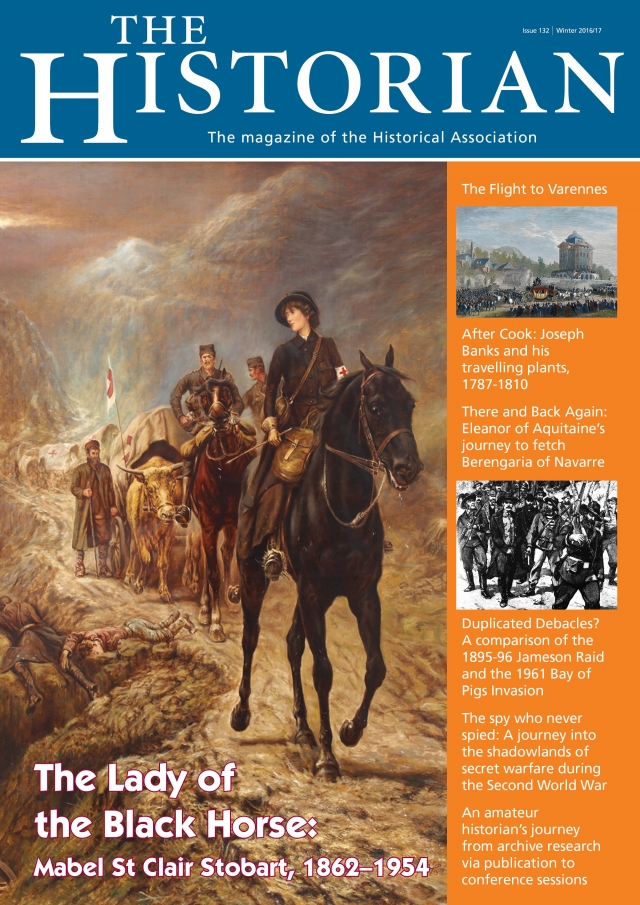The Historian 132: Out Now
Journal News

Journeys
The theme of this edition is ‘Journeys’. Our contributors have been asked to explore a journey, be it a journey through time or space. At the heart of each of their articles are people – bodyguards or commuters, historians or gardeners, mercenaries or nurses, queens or spies – and in studying these people we learn a little more about ourselves and our times. In her article Marisa Linton takes us along with a disguised Louis XVI and his family on their ill-fated flight to Varennes and their humiliating return to Paris. Mirabeau had told the king that any attempt to leave Paris should be in daylight but Louis disregarded this advice in what proved a turning point of the French Revolution. We learn why Louis took this fatal decision and its consequences for all those involved.
Similarly ill-fated travellers were the invaders of the Transvaal in 1901, and of Cuba in 1961. Neither invasion provoked the hoped-for popular uprising. Instead the invaders ended up imprisoned, discredited or dead. In exploring the similarities and differences of these two incidents, 60 years apart, turning points that never were, Adam Burns and Robert Gallimore draw some interesting conclusions.
Another notable example of this comparative history approach is The March of Folly: from Troy to Vietnam (1984) by Barbara Tuchmann in which she examines the Trojan War, the actions of the Catholic Church leading up to the Protestant secession, the American Revolutionary War and the Vietnam War. Whilst no two events are ever the same comparisons between them can give us clues to what might happen. The current example is that being made between the new US President and a similar predecessor, Warren G. Harding. Linking to those current events in the USA is an article by Claire Hubbard-Hall in which she explores the journey of would-be Nazi spy, Herbert Bahr, who travelled among refugees in his attempt to enter the country. That case had repercussions that also have resonance today.
The final four articles all feature journeys that can be viewed in some way as a success. Danielle Park takes us on the thrilling journey of Eleanor of Aquitaine, collecting Berengaria from Navarre and taking her to Sicily. Eleanor must have been a redoubtable woman to achieve such a feat at her advanced age in as dangerous an age as the twelfth century. Another redoubtable woman was Mabel Stobart. Her part in the Serbian retreat over the mountains in 1915 is captured in photographs chosen and explained by Peter Down. Then we have Joseph Banks, the man behind the journeys of people and plants around the world. His story is told in fascinating detail by Jordan Goodman. Finally we revisit the journey of Philip Browne. He first wrote for us of his researches into Captain Peirce and the wreck of the Halswell back in edition 121 and we carried a review of the book that emerged from that work in edition 129. Now he takes us on the next stage of his journey from researcher to published historian and the opportunities that affords to share his discoveries with a variety of audiences. Readers may see parallels to their own journeys as historians.
As well as these articles by our contributors you’ll also find all our regular features. Nigel Watt describes his Favourite History Place, Waterloo Station and I’ve been Out and About looking at statues of James Brindley in Coventry and Stoke. Meanwhile In the News focuses upon archaeological evidence, some found, some lost. It also draws to our attention the Battle of the Java Sea of 1942, at the time the greatest naval engagement since Jutland, which sees its 75th anniversary commemoration soon.
Finally we are always interested in publishing articles from our members. Do in the first instance contact us with your ideas. At the moment we are particularly interested in articles on the themes of independence and communism but we’re always happy to hear about your favourite history places.

